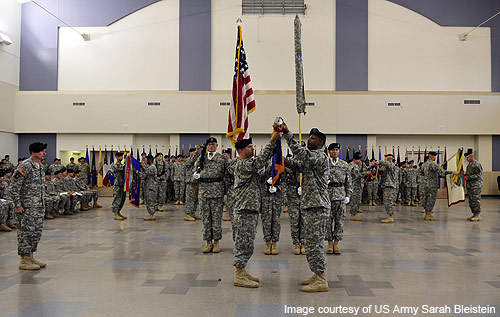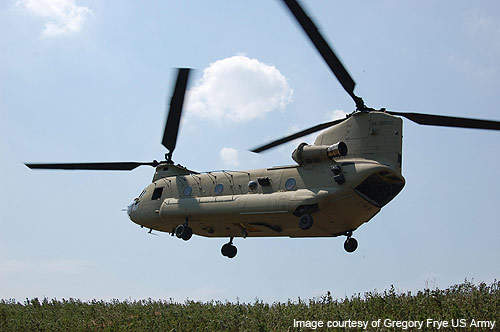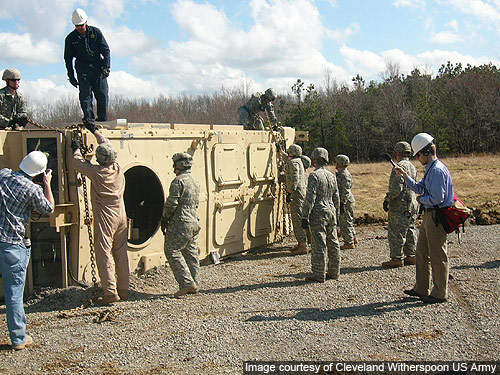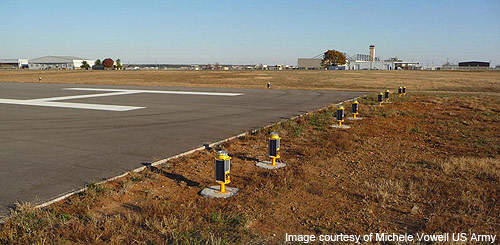Fort Campbell is located between Hopkinsville and Clarksville. The base provides installation support for the US Army’s most-deployed contingency forces. Fort Campbell is home to the only air assault division in the world, the 101st airborne division.
Strategically located on the Tennessee / Kentucky state line, the base serves the third largest military community of the US Army.
The base population of 202,890 includes 30,656 active duty members, 8,040 civilian employees, 51,740 family members and 112,454 supported population.
Fort Campbell occupies an area of 106,700 acres. It consists of 64,491 acres of manoeuvre area, 26,627 acres of impact area, 53 training areas, 95 ranges, 15 urban combat training sites, seven shoot houses, four major drop zones, 96 artillery firing points, seven observation points and a demo training area.
History of Fort Campbell
The US Army selected the site for Camp Campbell in July 1941. The construction of the base began in February 1942.
The installation was developed to accommodate an armoured division and support units with 23,000 men by 1943. The 11th airborne division arrived at the base in the spring of 1949.
The post received a permanent installation status and was renamed Fort Campbell in April 1950. The 101st airborne division was activated at the base in September 1956.
The basic combat training centre was established in May 1966. The 6th infantry division was reactivated at the base in November 1966 and demobilised in July 1968.
The US Army Training Centre and headquarters, Fort Campbell were merged in August 1969. The base welcomed the 173rd Airborne Brigade in September 1971. It was transformed into 3rd brigade, 101st airborne division (airmobile). The US Army Training Centre was deactivated in April 1972.
Garrison facilities at the US Army base
Major tenant units assigned to Fort Campbell are the 5th special forces group, Sabalauski air assault school (TSAAS), 716th military police battalion, 160th special operations aviation regiment and US Army medical activity.
Fort Campbell provides 4,454 housing units for officers, enlisted soldiers and their family members. Other base facilities include schools, medical centres, child care facilities, commissary, chapels, banks, restaurants, post exchanges, service stations and swimming pools.
Technology used at Fort Campbell
A solar runway lighting system called EAGLE, developed by Sierra Nevada, provides runway lighting to the army airfield at the base.
The lighting system meets the FAA 150/5345-46D intensity and chromaticity criteria.
Fort Campbell airfield is the first in the world to setup such a system.
The surface rehabilitation of runway 18/36 and installation of solar lighting systems on both 18/36 and heliport (destiny 23) was funded by the American recovery and reinvestment act.
The project also involved the installation of a solar precision approach path indicator (PAPI) on the runway. The two-box LED PAPI has visible and infrared features. The runway and heliport were reopened in October 2010.
Air facilities at Fort Campbell Army Airfield
Fort Campbell Army Airfield is spread over 2,500 acres of land. It has two runways and a heliport (called destiny).
The main runway (5/23) is 3,605m long and 61m wide. The second runway (18/36) is 1,372m in length and 46m in width. Both the runways are asphalt surfaced.
The airfield handles the normal traffic of Blackhawk helicopters and C-130 Hercules transport aircraft and also serves as an alternate landing site for Nasa’s space shuttles.
The army airfield is also home to two US Air Force tenant units, 19th air support operation squadron and operating location U 621 mobility operations group.
Around 400 rotary wing aircraft are stationed at the base. Fort Campbell also includes the Sabre Army Heliport. The heliport has a 1,357m long concrete runway (4/22), a parallel taxiway and connecting taxiways.
US Defence Sector: Market Opportunity and Entry Strategy, Analyses and Forecasts to 2015
Detailed analysis and forecasts of the US defence market are available from our business information platform Strategic Defence Intelligence. For more information click here or contact us: EMEA: +44 20 7936 6783; Americas: +1 415 439 4914; Asia Pacific: +61 2 9947 9709 or via email.








